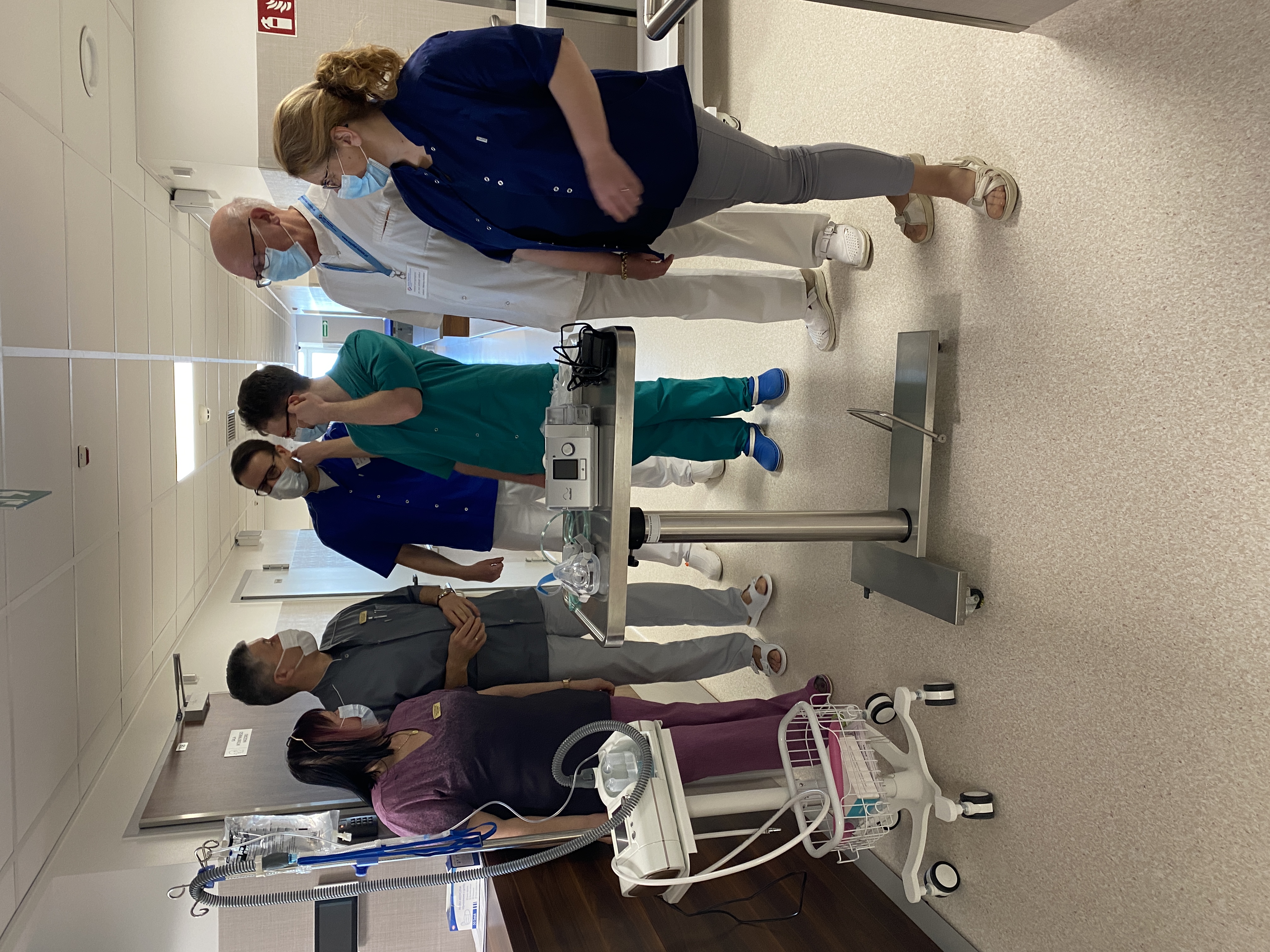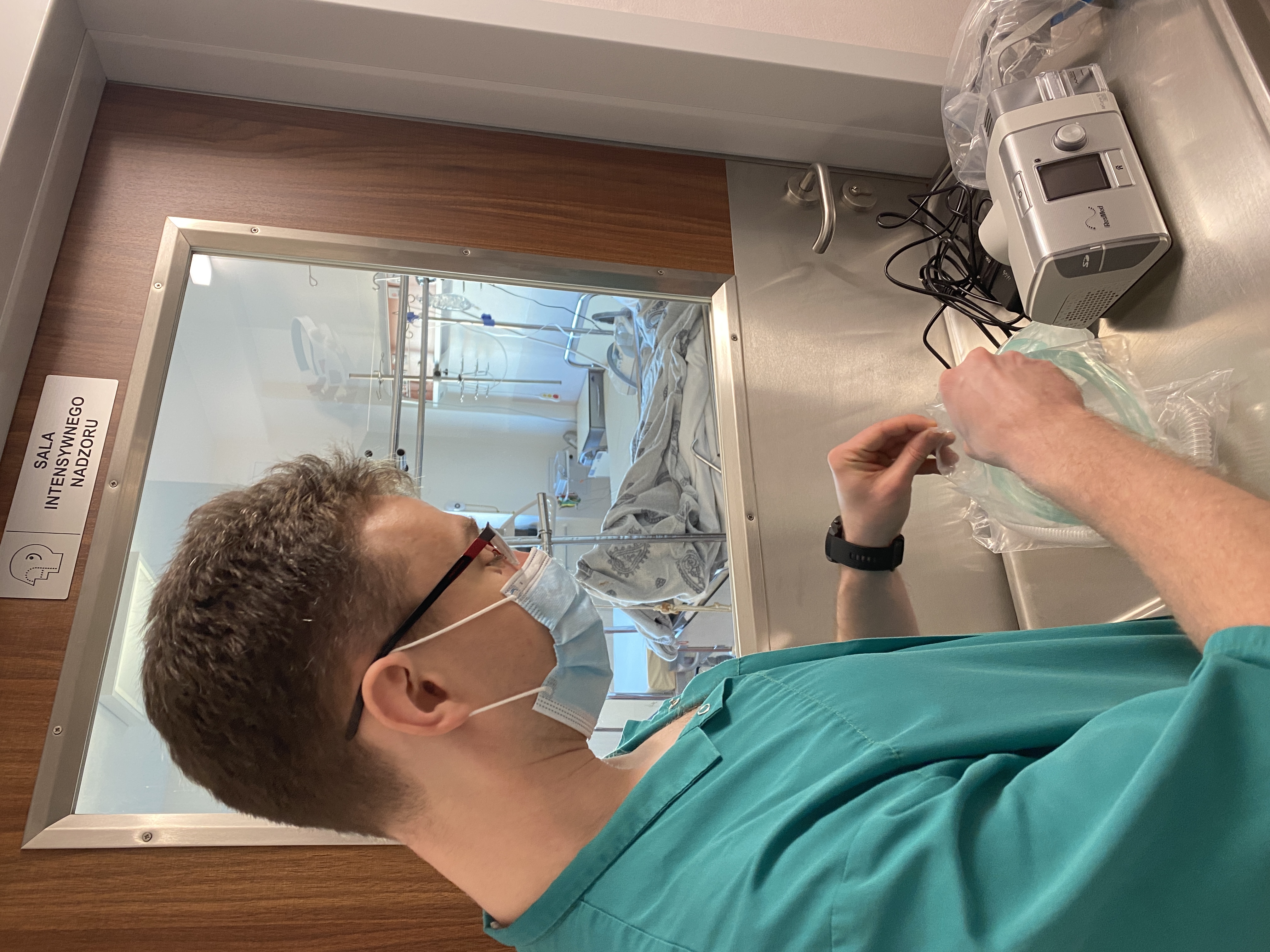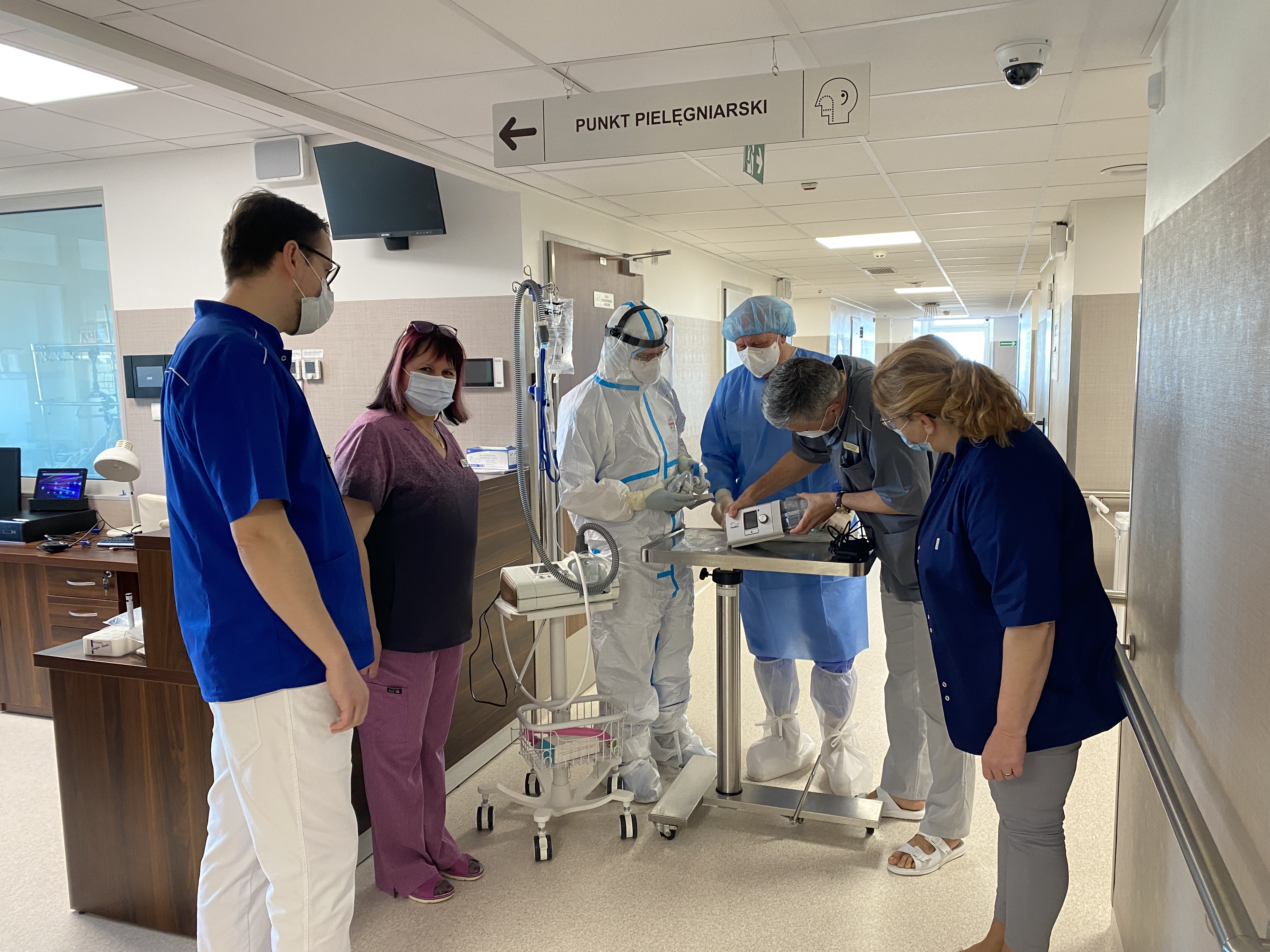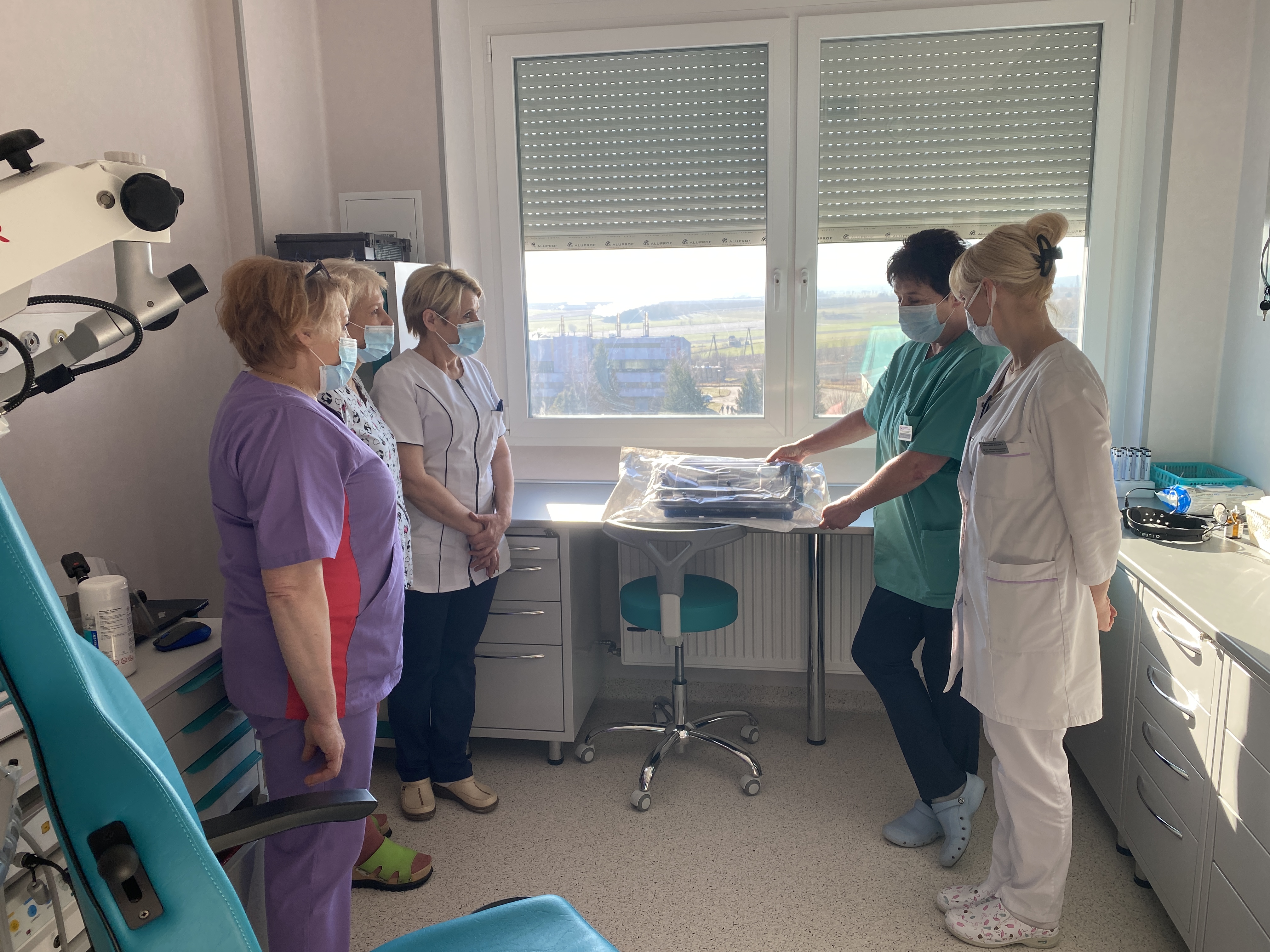Limiting the spread of COVID-19 disease in everyday medical practice among patients
As a result of our project, procedures were developed that describe step-by-step examination of the head and neck organs in patients with confirmed SARS-CoV-2 infection

 Project title
Project title
Limiting the spread of COVID-19 disease in everyday medical practice among patients with suspected or confirmed SARS-CoV-2 infection during otorhinolaryngological consultations.
 Name of Beneficiary/Beneficiaries
Name of Beneficiary/Beneficiaries
Cardinal Stefan Wyszyński Provincial Hospital in Łomża
 Name of programme
Name of programme
National Programmes
 Competition
Competition
Support for single-name hospitals in the fight against the spread of SARS-CoV-2 virus infection and in the treatment for COVID-19 patients
 Project value
Project value
PLN 7 919 380.43
 Funding value
Funding value
PLN 7 919 380.43
 Project delivery period
Project delivery period
21 July 2020 – 20 July 2021
Meet our team
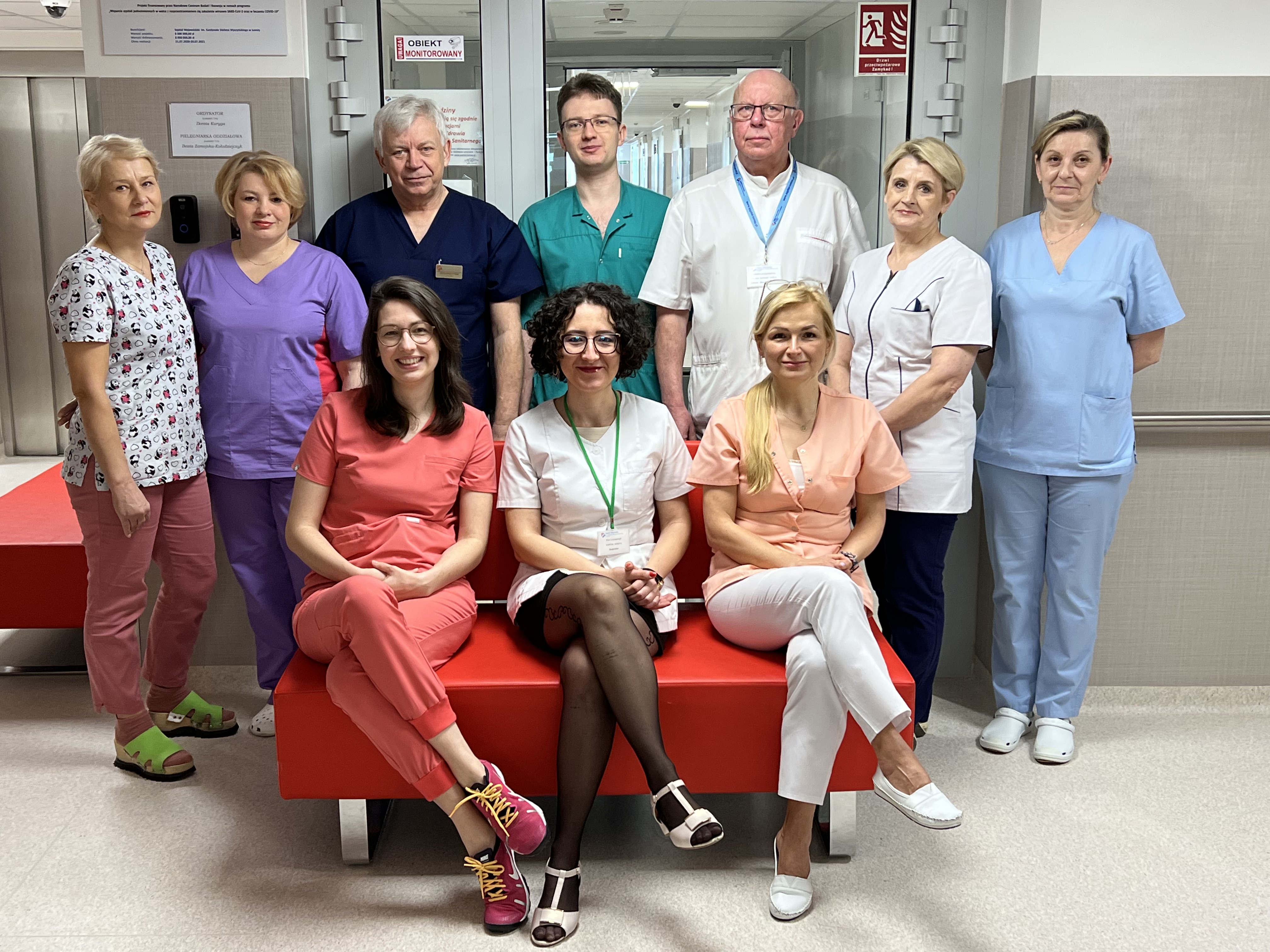

Research team representatives, from the left: Halina Łupińska - pulmonologist, Dariusz Rutkowski - pulmonologist, Piotr Owłasiuk – infectious diseases doctor, Tymoteusz Sztabiński- resident otorhinolaryngologist, Dariusz Cieśla - otorhinolaryngologist, Sylwia Cholewicka - otorhinolaryngologist
Financial settlement of the project, administrative employees of the accounting department, from the left: Anna Chludzińska, Marlena Wierzbowska
View the results of our work
Przygotowania aparatury medycznej w postaci pompy BiPAP i HFNT przed przystąpieniem do leczenia chorej z niewydolnością oddechową w przebiegu zakażenia SARS-CoV-2 zgodnie z „Procedurą zastosowania BiPAP w leczeniu COVID-19”
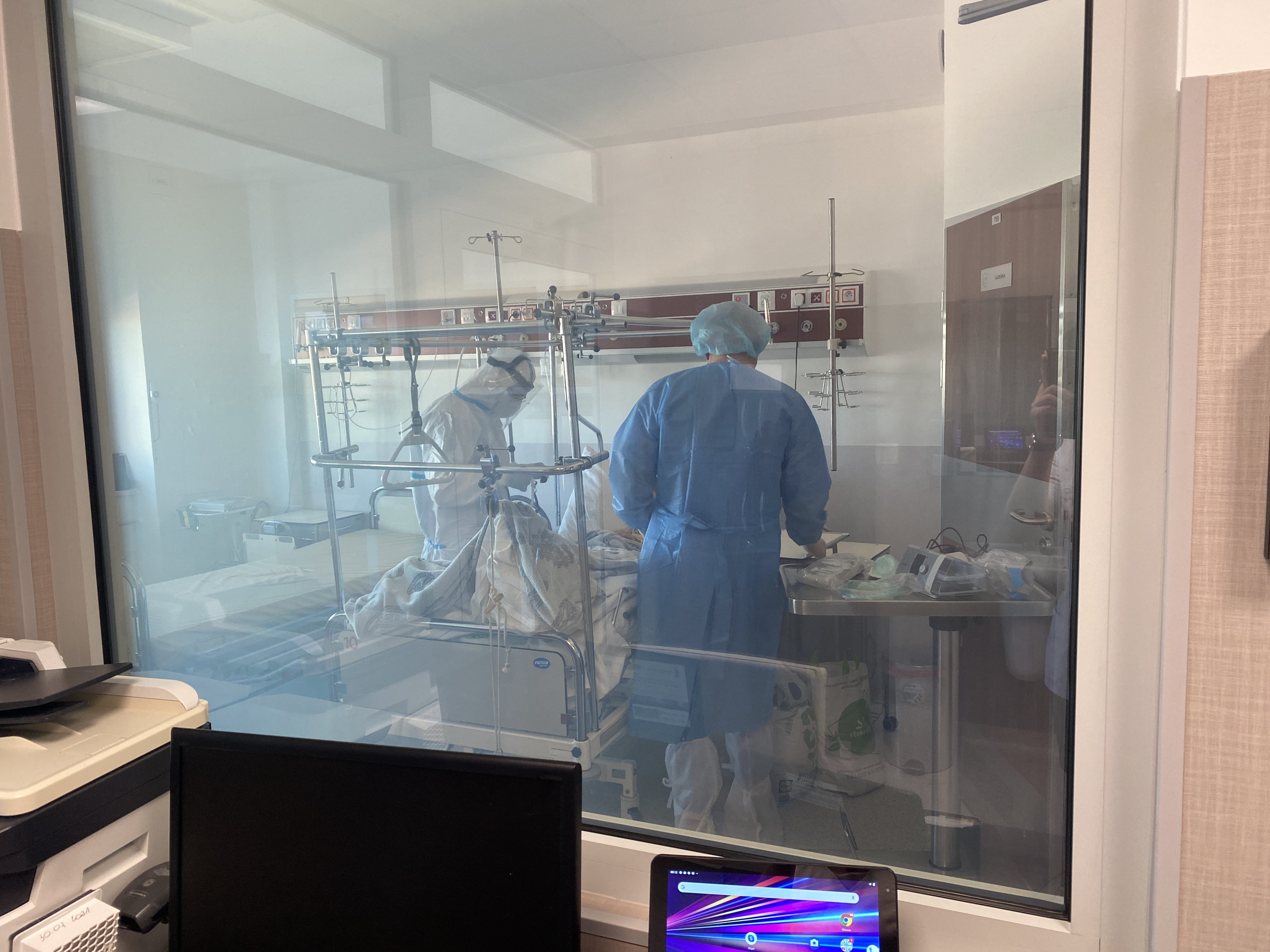
A diagnostic and treatment room, where a sterilization specialist and an epidemiological nurse train the nursing staff in the correct compliance with the "Procedure for decontamination and sterilization of ENT tools and medical equipment used for the activities in the field of otorhinolaryngology in conditions of SARS-CoV-2 infection"
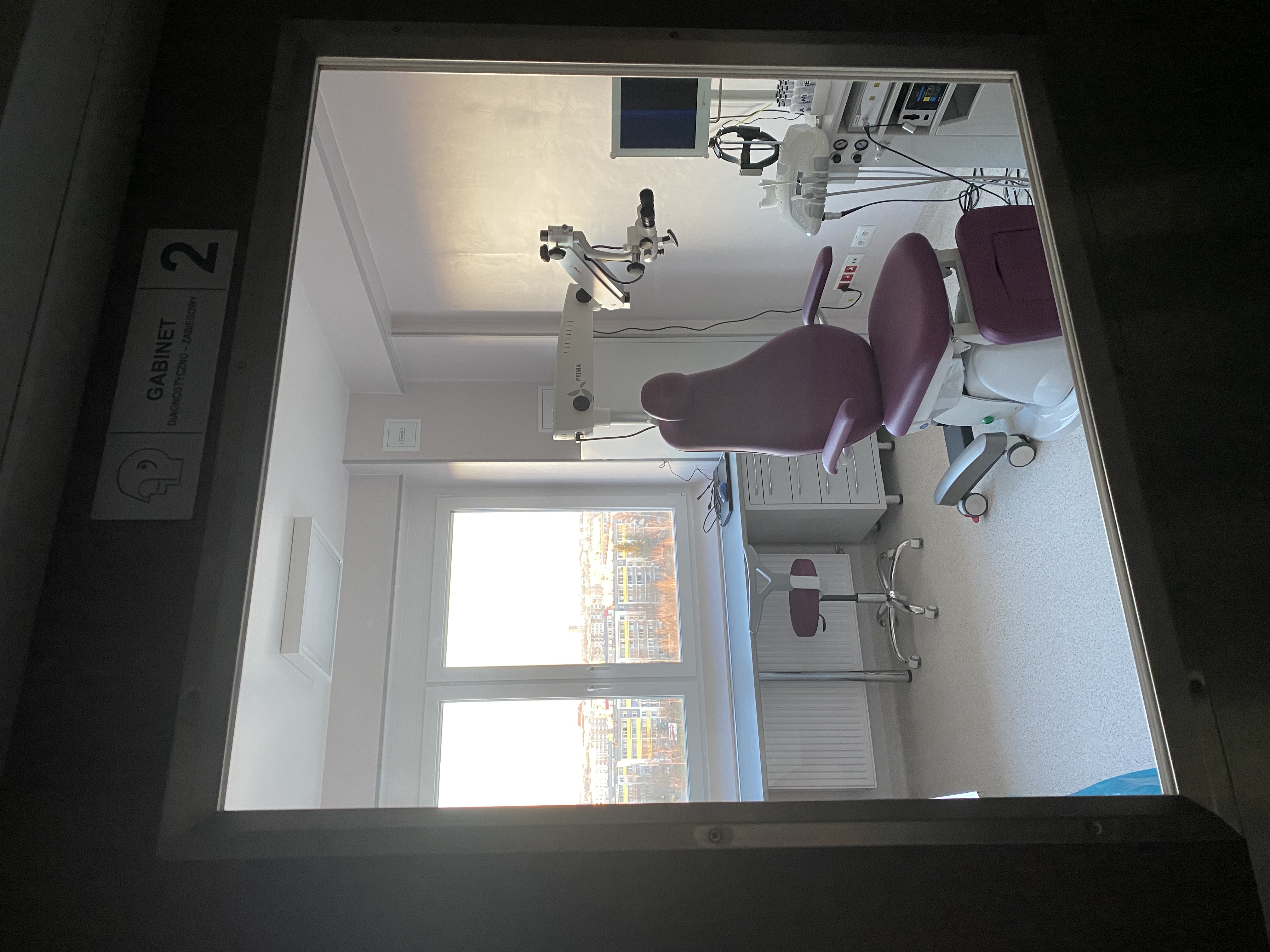
What problem is addressed by the project?
As a result of our project, procedures were developed that describe step-by-step examination of the head and neck organs in patients with confirmed SARS-CoV-2 infection. These procedures solve the problem of the widespread fear among otorhinolaryngologists about examining patients with confirmed SARS-CoV-2 infection. These concerns arose at the beginning of the COVID-19 pandemic because they were associated with a significant risk of transmission of the virus contained in aerosol particles and exhaled particularly intensively by patients when their throat, nose and larynx were examined. The developed procedures significantly increase the safety of an ENT examination through clear guidelines on the examination technique, thanks to which the contact time with the patient is shortened to a minimum while the high quality of the medical examination is maintained in conditions that meet the strict sanitary and epidemiological requirements. The developed procedures also include practical guidelines for assigning patients requiring hospital treatment in individual wards or rooms by separating more and less infectious zones, so as to reduce the exposure of staff to the risk of SARS-CoV-2 infection. In addition, thanks to the procedures that have been developed, the risk of spreading the virus through contact is reduced. Clear instructions on surface cleaning, disinfection and sterilization of medical instruments in direct contact with the mucous membranes and secretions of patients suffering from COVID-19, increase the safety and work comfort of the nursing, cleaning and hospital hygiene department staff. On the other hand, treatment regimens using increased continuous or variable pressures applied to the respiratory tracts, set the therapy path for patients manifesting respiratory failure due to COVID-19, in case when classic therapeutic methods, such as high-flow oxygen therapy or a ventilator, are not available.
Who uses the project results?
The results of the project, especially the developed treatment regimens, will benefit all health care facilities providing ENT services, hospitalization of patients with COVID-19 and other infectious diseases spread by air, droplets and contact. Since the developed procedures are, from our point of view, very universal, they can be implemented not only in Poland, but also all over the world, both in the public and private sectors. The developed procedures for simple ENT consultations, after their internal adaptation, will also prove useful in the surgeries of doctors providing outpatient services who are concerned about their safety and the potential transmission of infection from a patient of an unknown SARS-CoV-2 virus infection status.
What was the greatest challenge during project implementation?
The biggest challenge in implementing the project was to coordinate its individual stages with the dynamics of the epidemic. Due to the seasonality of people falling ill, the emergence of new virus variants and the introduction of vaccinations, it was not possible to recruit patients to research groups as planned. Also, the need to adapt the Hospital to the administratively dictated number of covid patients beds that could not be predicted by the research team, increased the concern about collecting appropriate research material. In addition, external factors conditioned by common delays in world market productions significantly extended the processes of supplying research equipment and the implementation of additional services included in the initial stages of the project. Everything was accompanied by work under the stress of fighting to save lives and the pressure to complete the project within a specific period.
Our advice for other applicants
First of all, before deciding to start a project, you need to check your own resources. During the period of an epidemic, you should bear in mind the increased absenteeism of both research and administrative staff. Before starting the project, the project manager should make sure that the terms of the competition and co-financing are known and understood by the administrative staff, especially the human resources, accounting and public procurement departments. You should also consider the possibility of limited supplies of the ordered materials and prepare an alternative plan for the implementation of research works based on the institution's own resources in the event of external suppliers failure to meet contractual agreements.
